This website uses cookies so that we can provide you with the best user experience possible. Cookie information is stored in your browser and performs functions such as recognising you when you return to our website and helping our team to understand which sections of the website you find most interesting and useful.
Home Care In Currie, NC

They say that your golden years are the best years of your life. For most older Americans, that's how it should be - a time to relax, reflect, and live life in a familiar place. After all, senior citizens in the U.S. have worked tirelessly to build a better economy, serve their communities, and raise families.
However, as seniors grow older, completing daily tasks like showering and enjoying activities such as visiting the historic 1921 Fort Fisher Monument gets harder without someone by their side. Unfortunately, many older Americans aren't able to rely on their adult children for help. The reality in today's world is that family members do not have the skills or time to dedicate to caring for their parents. That's where Always Best Care Senior Services comes in.
Our in-home care services are for people who prefer to stay at home as they grow older but need ongoing care that family or friends cannot provide. More and more older adults prefer to live far away from long-term, institutionalized facilities and closer to the place where they feel most comfortable - their home. Home care in Currie, NC is a safe, effective way to give your loved ones the care they need when they need it the most.

 Home Care Services
Home Care Services
- Home Care in Currie, NC
- The Always Best Care Difference
- Types of In-home Care in Currie, NC
- Benefits of Home Care in Currie, NC
- Aging in Place: The Preferred Choice for Most Seniors
- Affordable Care Plans
- Compassionate Care. Trusted Caregivers
- Assisted Living Referral Services
- Taking the First Step with Always Best Care
 Service Areas
Service Areas
The Always Best Care Difference
Since 1996, Always Best Care has provided non-medical in-home care for seniors to help them maintain a healthy lifestyle as they get older. We are proud to have helped more than 25,000 seniors maintain higher levels of dignity and respect. We focus on providing seniors with the highest level of in-home care available so that they may live happily and independently.
Unlike some senior care companies, we genuinely want to be included in our clients' lives. We believe that personalized care is always the better option over a "one size fits all" approach. To make sure our senior clients receive the best care possible, we pair them with compassionate caregivers who understand their unique needs. That way, they may provide care accordingly without compromising their wellbeing.
The Always Best Care difference lies in life's little moments - where compassionate care and trustworthy experience come together to help seniors live a fruitful, healthy life. Whether you are an aging adult that can't quite keep up with life's daily tasks or the child of a senior who needs regular in-home services, Always Best Care is here to help.
“My family’s experience has been wonderful with Always Best Care. They are an exceptional team”
“Always going the extra mile making sure my father is being well taken care of.”
“Always best care is a family oriented agency . I am blessed in my heart”
“I am very grateful to work for Always Best Care since year 2019. All office”
“Wonderful company!”
“Always Best Care Senior Services was exactly what our family needed during a challenging time”
“Wow, the virtual reality dementia training is very eye opening. Gives you an idea of”
“Enjoyed taking this virtual trip through the mind of a dementia.”
“This was a very good experience. It changed my mind on a lot of things”
“I had a great experience”
“Great experience! I think everyone who cares for someone with dementia should have this experience.”
“This experience was great. It gave me a different perspective on dealing with dementia. I”
“It was a great experience and it is a eye opener I loved it”
“Very knowledgeable and informative! Definitely recommend”
“Great training”
“I am a past client of this provider Always Best Care provided excellent, diligent, responsive and”
“They helped me with getting a wheelchair! They didn't want anything but to help me”
“I feel so blessed to be served by such caring and helpful people. I had”
“ABC services do an amazing job. They have helped my 90 year old mother in”
“I cannot recommend this service enough. The owner Shawn was wonderful to speak with.”
“These people are Angels. Kathryn was lightning quick with new solutions everytime things changed,”
“Kind aides who were patient and caring with my Mother. Quality service.”
“Excellent! Shawn was a Godsend. He found a great, affordable community for my Mom. We”
“I contacted Shawn when my mother returned home from the hospital. There are so many”
“I would have to say out of all the places I've work ABC is by”
“My family’s experience has been wonderful with Always Best Care. They are an exceptional team of caregivers who really care about the well fare of their clients. They go above and beyond taking care of my parents and have been very professional and dependable. I would recommend ABC to anyone who needs a reliable and competent care team. Karen Lussi”
“Always going the extra mile making sure my father is being well taken care of.”
“Always best care is a family oriented agency . I am blessed in my heart to see the services being rendered to clients. Extra miles taken to make sure every client is well taken care, even in unpleasant weather conditions. The CEO and administrators were out in the snow last week picking up workers who were unsure of driving . I was glad to see this commitment, making sure families could sit back and relax. With no fear, I will recommend Always best to any family who needs awesome care for their love ones.”
“I am very grateful to work for Always Best Care since year 2019. All office staff are great people, very helpful and always treat everyone with love and respect. Definitively it is a bless to work for this agency.”
“Wonderful company!”
“Always Best Care Senior Services was exactly what our family needed during a challenging time with our father. It all began with a fall, followed by an ER visit, and soon after, my sister and I found ourselves flying to NC to care for him and plan the next steps. Kathryn from Always Best Care was an absolute lifesaver! She guided us seamlessly through the process of finding the perfect independent senior living community for our father. Her extensive industry knowledge helped us navigate the additional health services he required with ease. Kathryn went above and beyond, consistently checking in and patiently responding to countless texts and emails from us. Thanks to her support, our father is now thriving in a supportive environment and is healthier than ever. We can’t imagine how we would have managed this journey without Kathryn’s expertise and compassion. Truly an incredible experience!”
“Wow, the virtual reality dementia training is very eye opening. Gives you an idea of what someone living with dementia is like. This is such a horrible disease but this helps care givers understand the disease. Thanks so much!!”
“Enjoyed taking this virtual trip through the mind of a dementia.”
“This was a very good experience. It changed my mind on a lot of things . I didn’t know it was that bad for them and it’s very sad , I will always treat them all with care and love no matter what because there dealing with something that’s really hard to deal with .”
“I had a great experience”
“Great experience! I think everyone who cares for someone with dementia should have this experience.”
“This experience was great. It gave me a different perspective on dealing with dementia. I now know what to do differently when working with my residents. I think A all caregivers should experience this training.”
“It was a great experience and it is a eye opener I loved it”
“Very knowledgeable and informative! Definitely recommend”
“Great training”
“I am a past client of this provider Always Best Care provided excellent, diligent, responsive and caring home health assistance to my mother who was recovering from an unexpected surgery. They were able to assist on incredibly short notice and made a difficult situation for our family much better. Each of their carers was exceptionally professional and attentive, especially Lori and Kylie who were incredible. I felt safe leaving my loved one in their care and appreciated that they went above and beyond to meet our needs. They provided regular updates to me and my family and made my mother feel so well attended, especially as she needed extra mobility and personal care help. I would absolutely not work with any other company, should we ever need home health assistance again. Highly recommend.”
“They helped me with getting a wheelchair! They didn't want anything but to help me gain my mobility! They are all super nice and very helpful! Give them your trust, they have mine. If I ever need home help, it'll be through them!”
“I feel so blessed to be served by such caring and helpful people. I had to downsize due to an unexpected illness and Always Best Care (ABC) stepped in to make this possible. Kind, compassion, pleasant, friendly, joyful and talented professionals comprise those providing this service. I literally couldn’t have lived for at my assisted living since I had so many hospital visits each week. I didn’t want to go alone to these appointments and this freed my family from needless distress and worry about my wellbeing when they couldn’t be there. I highly recommend ABC since they are an essential component providing excellent and reliable support.”
“ABC services do an amazing job. They have helped my 90 year old mother in law transition into her new home after moving to Raleigh from Winston Salem. She has dialysis 3x a week and they have worked so hard to coordinate a schedule to make sure everything runs smoothly. Sherry continues to amaze me in how she is able to help figure out schedules and provide customer services in a kind and professional manner. We will continue to look to this wonderful service provider as her needs change and feel blessed to have them on site at Atri”
“I cannot recommend this service enough. The owner Shawn was wonderful to speak with. He was sincerely concerned about my mom and our family. He is an excellent listener and introduced me to Paige who is equally wonderful. Together they found a great place for my mother in a very short time. Paige was always available to speak on the phone and addressed my questions or concerns. I would recommend using this service for your loved one. Laura B of Raleigh”
“These people are Angels. Kathryn was lightning quick with new solutions everytime things changed, and things changed constantly. My dad has a chance to live the rest of his life with dignity and my mom has a chance to live a fuller life because of the help we got from Kathryn and this team. They have a great network and valuable knowledge but what observed that makes them invaluable is that they care...and when you are on this situation I found that this is the quality that matters the most. Cannot thank them enough.”
“Kind aides who were patient and caring with my Mother. Quality service.”
“Excellent! Shawn was a Godsend. He found a great, affordable community for my Mom. We are very satisfied with his service and professionalism. He took his time and our requirements and found the perfect place. Highly recommend him and Always Best Care!”
“I contacted Shawn when my mother returned home from the hospital. There are so many options it was confusing for me! Shawn and his team sent me several places to review and then accompanied me to visit independent living facilities. I appreciate the resources and information provided. Shawn, thank you for being focused on our family's needs and sharing your expertise. Your compassion and patience is so very appreciated!”
“I would have to say out of all the places I've work ABC is by far the best place I've worked our boss and staff are everything.????????????????????????????????????????????????????”
What is Non-Medical Senior Care in Currie, NC?

Home is where the heart is. While that saying can sound a tad cliche, it is especially true for many seniors living in America. When given a choice, older adults most often prefer to grow older at home. An AARP study found that three out of four adults over the age of 50 want to stay in their homes and communities as they age.

When you begin to think about why, it makes sense. Home offers a sense of security, comfort, and familiarity.

The truth is, as we age, we begin to rely on others for help. When a family is too busy or lives too far away to fulfill this role, in-home senior care is often the best solution. Home care services allow seniors to enjoy personal independence while also receiving trustworthy assistance from a trained caregiver.

At Always Best Care, we offer a comprehensive range of home care services to help seniors stay healthy while they get the help they need to remain independent. As your senior loved one gets older, giving them the gift of senior care is one of the best ways to show your love, even if you live far away.

Types of Elderly Care in Currie, NC
To give our senior clients the best care possible, we offer a full spectrum of in-home care services:

Personal Care Services
If your senior loved one has specific care needs, our personal care services are a great choice to consider. Personal care includes the standard caregiving duties associated with companion care and includes help with tasks such as dressing and grooming. Personal care can also help individuals with chronic conditions like diabetes.
Common personal care services include assistance with:
- Eating
- Mobility Issues
- Incontinence
- Bathing
- Dressing
- Grooming


Home Helper Services
Sometimes, seniors need helpful reminders to maintain a high quality of life at home. If you or your senior has trouble with everyday tasks like cooking, our home helper services will be very beneficial.
Common home helper care services include assistance with:
- Medication Reminders
- Meal Preparation
- Pet Care
- Prescription Refills
- Morning Wake-Up
- Walking
- Reading


Companionship Services
Using this kind of care is a fantastic way to make life easier for you or your senior loved one. At Always Best Care, our talented caregivers often fill the role of a companion for seniors. That way, older adults can enjoy their favorite local activities, such as visiting Moores Creek National Battlefield with friends while also receiving the care they need daily or weekly.
Common companionship services include:
- Grocery Shopping
- Transportation to Appointments
- Nutritional Assistance
- Conversation
- Planning Outings
- Completing Errands
- Transportation to Community
- Events and Social Outings


Respite Care Services
According to AARP, more than 53 million adults living in the U.S. provide care to someone over 50 years old. Unfortunately, these caregivers experience stress, exhaustion, and even depression. Our respite care services help family caregivers address urgent obligations, spend time with their children, and enjoy nearby activities. Perhaps more importantly, respite care gives family members time to recharge and regroup. Taking personal time to de-stress reduces the risk of caregiver burnout. So, if you've always wanted to eat at the local Johnson Corner Grill or visit Mill Prong Preservation, Inc., don't feel bad. Doing so is great for both you and your loved one.
At the end of the day, our goal is to become a valuable part of your senior's daily routine. That way, we may help give them the highest quality of life possible. We know that staying at home is important for your loved one, and we are here to help make sure that is possible.
If you have been on the fence about non-medical home care, there has never been a better time than now to give your senior the care, assistance, and companionship they deserve.

Benefits of Home Care in Currie, NC
Always Best Care in-home services are for older adults who prefer to stay at home but need ongoing care that friends and family cannot provide. In-home care is a safe, effective way for seniors to age gracefully in a familiar place and live independent, non-institutionalized lives. The benefits of non-medical home care are numerous. Here are just a few reasons to consider senior care services from Always Best Care:
Always Best Care offers a full array of care options for patients at all levels of health. With our trusted elderly care services, your loved one will receive the level of care necessary for them to enjoy the highest possible quality of life.
Request More Information
Aging in Place: The Preferred Choice for Most Seniors
While it's true that some seniors have complicated medical needs that prevent them from staying at home, aging in place is often the best arrangement for seniors and their families. With a trusted caregiver, seniors have the opportunity to live with a sense of dignity and do so as they see fit - something that is unavailable to many older people today.
In-home care makes it possible for millions of seniors to age in place every year. Rather than moving to a strange nursing home, seniors have the chance to stay at home where they feel the happiest and most comfortable.
Here are just a few of the reasons why older men and women prefer to age at home:
How much does a senior's home truly mean to them?
A study published by the American Society on Aging found that more than half of seniors say their home's emotional value means more than how much their home is worth in monetary value. It stands to reason, then, that a senior's home is where they want to grow old.
With the help of elderly care in Currie, NC, seniors don't have to age in a sterilized care facility. Instead, they can age gracefully in the place they want to be most: their home. In contrast, seniors who move to a long-term care facility must adapt to new environments, new people, and new systems that the facility implements. At this stage in life, this kind of drastic change can be more harmful than helpful.
Institutional care facilities like nursing homes often put large groups of people together to live in one location. On any given day, dozens of staff members and caregivers run in and out of these facilities. Being around so many new people in a relatively small living environment can be dangerous for a seniors' health and wellbeing. When you consider that thousands of seniors passed away in nursing homes during the COVID-19 pandemic, opting for in-home care is often a safer, healthier choice for seniors.
Aging in place has been shown to improve seniors' quality of life, which helps boost physical health and also helps insulate them from viral and bacterial risks found in elderly living facilities.
For many seniors, the ability to live independently with assistance from a caregiver is a priceless option. With in-home care, seniors experience a higher level of independence and freedom - much more so than in other settings like a nursing home. When a senior has the chance to age in place, they get to live life on their own terms, inside the house that they helped make into a home. More independence means more control over their personal lives, too, which leads to increased levels of fulfillment, happiness, and personal gratification. Over time, these positive feelings can manifest into a healthier, longer life.
More independence, a healthier life, and increased comfort are only a few benefits of aging in place. You have to take into consideration the role of cost and convenience. Simply put, it's usually easier and more affordable to help seniors age in place than it is to move them into an institutional care facility. According to the US Department of Housing and Urban Development, seniors who age in the comfort of their homes can save thousands of dollars per month.
In-home care services from Always Best Care, for instance, are often less expensive than long-term solutions, which can cost upwards of six figures per year. To make matters worse, many residential care facilities are reluctant to accept long-term care insurance and other types of payment assistance.
With Always Best Care's home care services, seniors and their families have a greater level of control over their care plans. In-home care gives seniors the chance to form a bond with a trusted caregiver and also receive unmatched care that is catered to their needs. In long-term care facilities, seniors and their loved ones have much less control over their care plan and have less of a say in who provides their care.

Affordable Care
In-home care is a valuable resource that empowers seniors to age in place on their own terms. However, a big concern for many families and their loved ones is how much in-home care costs. If you're worried that in-home care is too expensive, you may be pleasantly surprised to learn that it is one of the most affordable senior care arrangements available.
Typically, hiring an Always Best Care in-home caregiver for a few hours a week is more affordable than sending your loved one to a long-term care facility. This is true even for seniors with more complex care needs.
At Always Best Care, we will work closely with you and your family to develop a Care Plan that not only meets your care needs, but your budget requirements, too. Once we discover the level of care that you or your senior need, we develop an in-home care plan that you can afford.
In addition to our flexible care options, families should also consider the following resources to help offset potential home care costs:

Compassionate Care. Trusted Caregivers.
When you or your senior loved one needs assistance managing daily tasks at home, finding a qualified caregiver can be challenging. It takes a special kind of person to provide reliable care for your senior loved one. However, a caregiver's role involves more than meal preparation and medication reminders. Many seniors rely on their caregivers for companionship, too.
Our companion care services give seniors the chance to socialize in a safe environment and engage in activities at home. These important efforts boost morale and provide much-needed relief from repetitive daily routines. A one-on-one, engaging conversation can sharpen seniors' minds and give them something in which to be excited.
At Always Best Care, we only hire care providers that we would trust to care for our own loved ones. Our senior caregivers in Currie, NC understand how important it is to listen and communicate with their seniors. A seemingly small interaction, like a short hug goodbye, can make a major difference in a senior's day. Instead of battling against feelings of isolation, seniors begin to look forward to seeing their caregiver each week.
Understanding the nuances of senior care is just one of the reasons why our care providers are so great at their job.
Unlike some senior care companies, our caregivers must undergo extensive training before they work for Always Best Care. In addition, our caregivers receive ongoing training throughout the year. This training ensures that their standard of care matches up to the high standards we've come to expect. During this training, they will brush up on their communication skills, safety awareness, and symptom spotting. That way, your loved one receives the highest level of non-medical home care from day one.
Assisted Living Referral Services
While it's true that many seniors prefer to age at home, sometimes in-home care isn't the best fit. For those seniors and their families, choosing an assisted living facility makes more sense. Unfortunately, finding the optimal care facility is easier said than done in today's day and age. That's when Always Best Care's assisted living referral services begin to make a lot of sense.
Assisted living is a form of housing intended for seniors who require varying degrees of medical and personal attention. Accommodations may include single rooms, apartments, or shared living arrangements. Assisted living communities are typically designed to resemble a home-like environment and are physically constructed to encourage the independence of residents.

At assisted living communities, seniors receive help with daily activities such as bathing, dressing, and eating. They may also benefit from coordination of services with outside healthcare providers, and monitoring of resident activities to ensure their health, safety, and well-being. Caregivers who work at assisted living communities can also provide medication administration and personal care services for older adults.
Other services offered within assisted living communities can include some or all of the following:
- Housekeeping
- Laundry
- Recreational Activities
- Social Outings
- Emergency Medical Response
- Medication Monitoring
- Family Visitation
- Personal Care

At Always Best Care, our representatives can match your senior's emotional, physical, and financial needs with viable assisted living communities nearby. Results are based on comparative data, so you can select the best choice for you or your loved one.
Always Best Care works closely with local senior living communities to gain valuable knowledge that we then use to help seniors and their loved ones make informed decisions. This information can include basic care and rent, resident availability, and services provided. Because Always Best Care is compensated by these communities, we provide senior living referral services at no extra cost to you.
Some of the most popular assisted living communities to consider in our area include the following:
- Dayspring of Wallace
- Champions Assisted Living
- Ashe Gardens Memory Care
- Carolina Residential Services
- The Laurels of Pender
- Smith Family Care Home

For many seniors, moving into a senior living community revolves around how and when they want to make a transition to more involved care. Some seniors are more proactive about transitioning to independent living. Others choose to remain home until their care needs or other requirements are satisfied. Remember - our staff is here to help. Contact our office today to learn more about assisted living communities and how we can find a facility that exceeds your expectations.

Taking the First Step with Always Best Care
The first step in getting quality in-home care starts with a personal consultation with an experienced Always Best Care Care Coordinator. This initial consultation is crucial for our team to learn more about you or your elderly loved one to discover the level of care required. Topics of this consultation typically include:
A discussion of your needs and how our trained caregivers can offer assistance in the most effective way

A draft of your care plan, which includes highly detailed notes and a framework for the care that you or your senior will receive

Discuss payment options and help coordinate billing with your insurance provider

Our caregivers are trained to spot changes that clients exhibit, like mental and physical decline. As your trusted senior care company, we will constantly assess and update your Care Plan to meet any new emotional, intellectual, physical, and emotional needs.
If you have never considered in-home care before, we understand that you and your family may have concerns about your Care Plan and its Care Coordinator. To help give you peace of mind, know that every team member and caregiver must undergo comprehensive training before being assigned to a Care Plan.
At the end of the day, we only hire the best of the best at Always Best Care. Whether you need home care in Currie, NC 24-hours a day or only need a respite for a couple of hours, we are here to serve you.
When you're ready, we encourage you to contact your local Always Best Care representative to set up a Care Consultation. Our Care Coordinators would be happy to meet with you in person to get to know you better, discuss your needs, and help put together a personalized Care Plan specific to your needs.

Latest News in Currie, NC
Disclaimer:


 919-554-2223
919-554-2223





